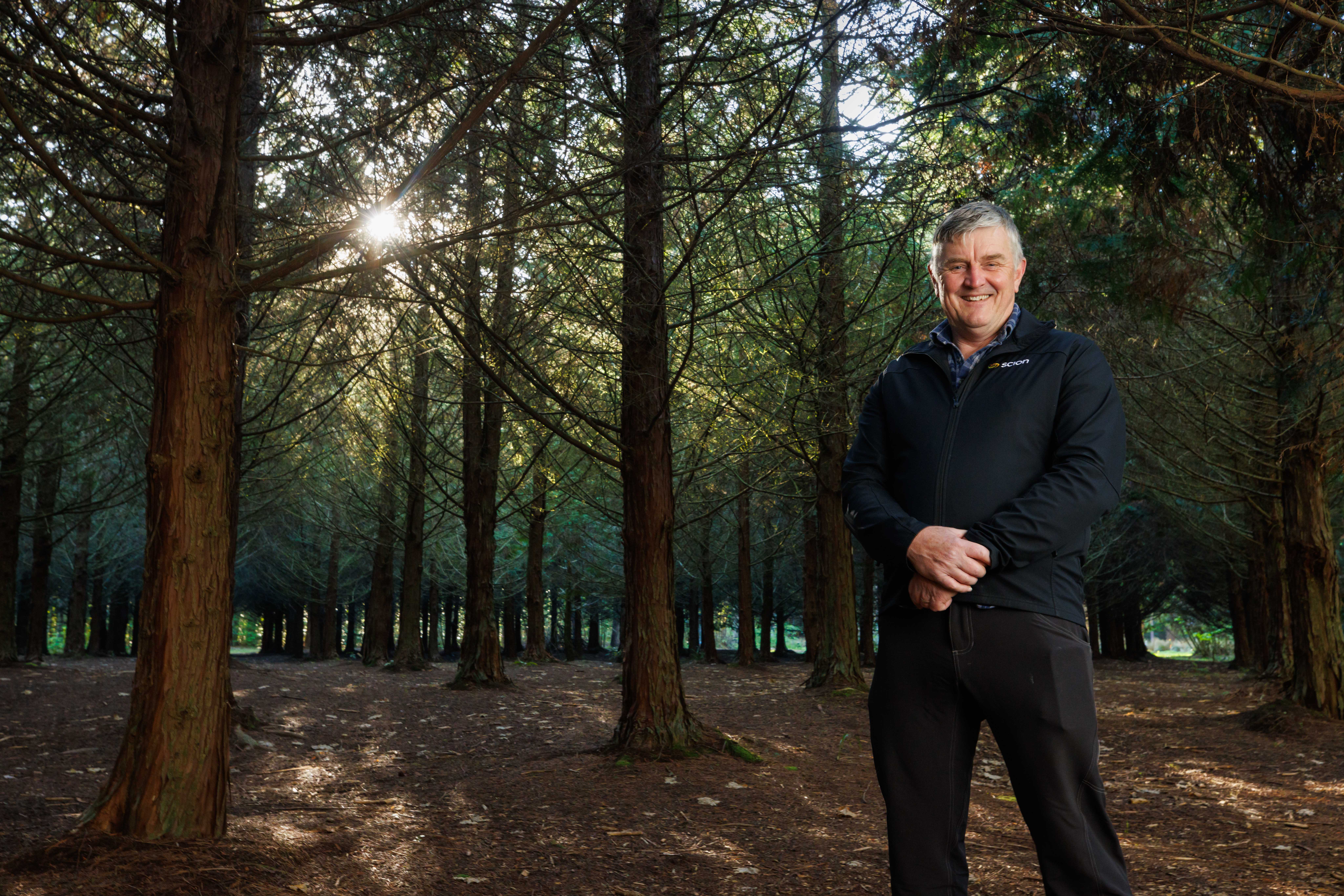Genetic resource helps paint big picture
Pinus hartweggii (pino de las alturas) from Mexico, Cumminghamia lanceolata from Taiwan, Tsuga heterophylla (western hemlock) from the United States and Cupressus lusitanica strands from Kenya — these are just a few of more than 60 tree species from around the world planted on Scion’s Rotorua campus.
Together they make up the Tree Library - a living collection of exotic species representing New Zealand’s forestry history, including some now rare examples. Formation of the tree library began in the 1950’s with todays oldest trees dating back to 1962 , Scion technologist Toby Stovold says.
Before radiata pine dominated, tree breeders planted a range of conifers and eucalypts on Scion’s Rotorua campus and in sister trials nationwide, to assess how things grew and where. The area on campus now includes about 1000 radiata pine selections, some of the biggest Eucalyptus regnans in New Zealand, Japanese cedar acquired from Japan in the 1960s, redwoods and more.

Many Rotorua dog walkers will have found themselves walking in the living library – about two-thirds of it is also known as the dog park.
Blocks within the living archive are sometimes harvested and replanted with different scientific trials. The area acts as a “genetic resource,” Stovold says. It is a way to see species already planted in New Zealand, making seed importation faster and easier, and it is evidence of rare or strange species existing here such as Pinus ayacahuite planted in the 1960s which has large, heavy seeds, and Cupressus guadalupensis a vulnerable species endemic to Mexico where it only grows on Guadalupe Island.
The archive forms a big picture to help beyond research.
“If industry decided they needed to integrate a species from here into new plantings, it would play a part but it wouldn’t be the only part. There are sister trials around New Zealand and you might find different adaptations in different climates.
“This library is also a backup for some of these species. We cannot do industry scale seed supply out of here, but we can support a species getting to that scale.”
Stovold says it could also prove useful in the future. For example, if climate change affects where Pinus radiata can be grown, the archive would be a point of information about other suitable species. He also sees a future where it could be a public educational resource featuring informational signs with QR codes directing people to educational content for each species.
The trees on campus, alongside those in sister trials, also form a database of how species perform in various parts of New Zealand.
Vaughan Kearns, secretary of the New Zealand Farm Forestry Association’s cypress development group says the library is a seed and information resource including rare and imported species.
“It’s an opportunity to see long rotation species in their prime and also we can see what their value is for carbon sequestration, how long they live and how healthy they stay.”
He says such a comprehensive selection is not available elsewhere.
Scion's Tree Library has already been a point of call for decades and with samples from around the globe, it could be a resource for many more to come.
